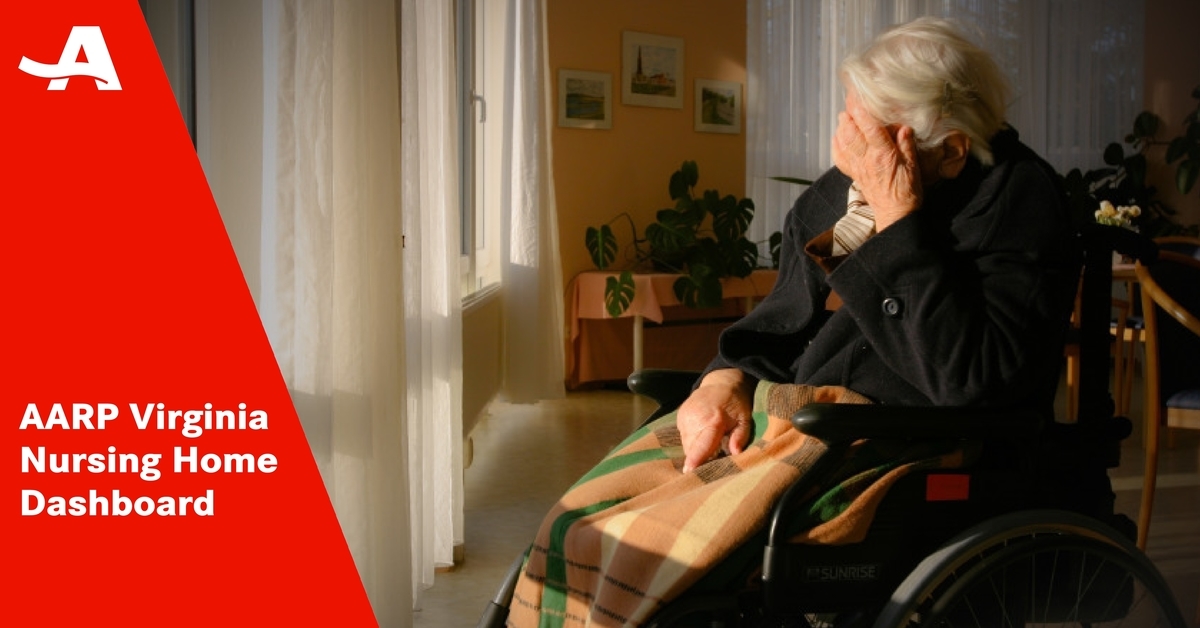AARP Hearing Center

38% of Nursing Home Residents Statewide Have Received Two COVID-19 Boosters
New data show that COVID-19 still has a deadly grip on the nation’s nursing homes, with the number of deaths and cases among residents and staff nationwide rising for the fourth consecutive month. This comes as troubling new numbers show that only a little more than half of nursing home residents nationwide were up to date with their COVID-19 vaccinations and considered fully protected.
The rate of nursing home resident deaths nationwide increased by about 30% in the four-week period ending August 21, according to AARP’s Nursing Home COVID-19 Dashboard, compared to the previous Dashboard release. More than 1,000 residents and more than 100 staff died nationwide from COVID-19 during those four weeks, about four times the number that died during the four weeks ending April 17, before the current surge.
The rate of COVID-19 cases and deaths in Virginia are the highest they have been since February 2022. The current AARP fact sheet on nursing home COVID-19 cases and deaths, staffing levels, vaccination rates and more is available online.
In Virginia, resident deaths were up from .08 per 100 residents in the previous four-week period ending July 17, to .13 per 100 residents in the four-week period ending August 21. Since the beginning of the pandemic, more than 4,100 nursing home residents in Virginia have died from COVID-19.
Furthermore, the rates of resident and staff cases have increased nine-fold nationwide over the last four months. In Virginia, nursing home resident cases were up from a rate of 3.9 per 100 residents in the previous four-week period ending July 17, to 4.7 per 100 in the four-week period ending August 21. The rate of staff cases was up to a rate of 4.9 per 100 residents compared to 3.81 per 100 residents in the previous Dashboard release.
Data for this month’s Dashboard also include, for the first time since the pandemic began, estimates of the percentage of nursing home residents who have received two or more booster doses, as well as the percentage of residents who are considered “up to date” on their shots— meaning they are fully vaccinated and not overdue for their first or second booster dose.
As of mid-August, only about 38% of nursing home residents nationwide, and 38% in Virginia, had received two or more booster shots, while only about 56% nationwide and 55% in Virginia were considered up to date with their vaccines and/or boosters. Nationally, about 75% of residents and about 51% of staff have been fully vaccinated and have received at least one booster shot, unchanged from the previous month. In Virginia, about 76% of residents and 52% of staff have received at least one booster.
“We know that our loved ones in nursing homes are among the most vulnerable when it comes to COVID-19,” said David DeBiasi, Associate State Director for Advocacy of AARP Virginia, which serves more than 1 million members age 50 and older in the state. “With winter coming and flu season upon us, we must do everything we can to protect these folks from COVID-19 and a big part of that is prioritizing vaccines and boosters.”
Nationwide, about 25% of nursing homes reported a staffing shortage in the four weeks ending August 21. In Virginia, 22% of facilities reported a shortage of nurses or aides for the same period.
AARP is fighting for minimum hourly staffing standards in Virginia’s nursing homes, which would ensure quality care and help address workforce shortages by providing a minimum 4.1 hours of nurse and aide time per patient per day. Currently, Virginia has no staffing standards for facilities.
"We know higher levels of nurse staffing add up to better quality care for residents in multiple areas, including decreased infections, fewer bed sores, and lower mortality rates," DeBiasi said. "AARP is fighting for critical legislation in Virginia that addresses staffing inadequacies and other chronic issues in nursing homes. Nationally, AARP also supports the establishment of mandatory federal minimum staffing levels or standards as a condition of participation for nursing homes in Medicare and Medicaid."
The AARP Nursing Home COVID-19 Dashboard analyzes federally reported data in four-week periods going back to June 1, 2020. Using this data, the AARP Public Policy Institute, in collaboration with the Scripps Gerontology Center at Miami University in Ohio, created the Dashboard to provide snapshots of the virus' infiltration into nursing homes and impact on nursing home residents and staff, with the goal of identifying specific areas of concern at the national and state levels in a timely manner.
The full AARP Nursing Home COVID-19 Dashboard is available at www.aarp.org/nursinghomedashboard. Medicare.gov's Care Compare website now offers information about vaccination and booster rates within individual nursing homes and how they compare to state and national averages.
For more information on how coronavirus is impacting nursing homes and AARP's advocacy on this issue, visit www.aarp.org/nursinghomes. If you or a family member live or work in a nursing home and have concerns about resident safety, visit action.aarp.org/vanursinghomes.
About AARP
AARP is the nation's largest nonprofit, nonpartisan organization dedicated to empowering people 50 and older to choose how they live as they age. With a nationwide presence and nearly 38 million members, AARP strengthens communities and advocates for what matters most to families: health security, financial stability and personal fulfillment. AARP also produces the nation's largest circulation publications: AARP The Magazine and AARP Bulletin. To learn more, visit www.aarp.org, www.aarp.org/espanol or follow @AARP, @AARPenEspanol and @AARPadvocates, @AliadosAdelante on social media.































































